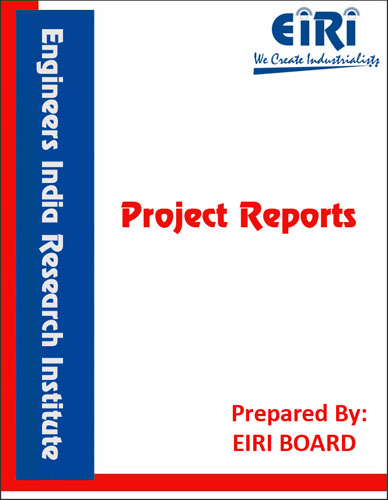AGRICULTURAL COLLEGE
The project report includes Present Market Position and Expected Future Demand, Market Size, Statistics, Trends, SWOT Analysis and Forecasts. Report provides a comprehensive analysis from industry covering detailed reporting and evaluates the position of the industry by providing insights to the SWOT analysis of the industry.
We can prepare PROJECT REPORT as per your INVESTMENT PLAN for BANK LOAN REQUIREMENT and INDUSTRY ANALYSIS. All reports are prepared by highly qualified consultants and verified by a panel of experts.
Have Query? Click Here to Chat
Industry Expert is Online, Chat with him for more detail.

Agriculture is the main source of livelihood for over 80% of the rural poor in India. Although, it employs about 52% of the labor force, it contributes to only 14.4% of GDP and 10.23% of all exports. Rural women, who constitute 30% of the agricultural work force, are amongst the least paid workers. Any effort of poverty reduction and economic development must address the problems being faced by the agricultural sector and turn the challenges into economic opportunities for the poor.
India achieved spectacular agricultural growth since 1966. The increase in food grain production from a meager 51 million tones in 1950 to about 245 million tones in 2011-12 is a remarkable achievement unparallel in the history of world agriculture. Similar enhancement in production of milk, fish, oilseeds and fruit & vegetables has also been observed. Green, blue, yellow and white revolutions have been responsible for bringing in prosperity to the farming community. The cradle of the success, besides government policies and high receptivity of the farming community, has been the establishment of institutions of higher agricultural education. These institutions developed new breed of skilled human resource who were instrumental in not only generating new technologies but also in their assessment, refinement and dissemination to the farming community.
Human Resource development is critical for sustaining, diversifying and realizing the potentials of agriculture. Agricultural human resource development is a continuous process being undertaken through partnership and efforts of the components of the Indian Council of Agricultural Research (ICAR) – Agricultural Universities (AUs) System comprising 53 State Agricultural Universities (SAUs), five Deemed to be universities (DUs), one Central Agricultural University (CAU) and four Central Universities (CUs) with Agriculture Faculty. The Agricultural Universities in India set up on the ‘land grant’ pattern of USA have contributed immensely to human resource development as well as enhancement of agricultural productivity and production in the country over the years. The system of education in Agricultural Universities was basically taken from USA pattern that greatly enabled incorporation of a number of diverse subjects in the courses as also provision of hands-on practical experience to the students.
Agricultural education has now to evolve in tune with fast changing national and international scenario. Future agriculture is dominated by looming dangers of food insecurity originating from an unholy alliance of existing and emerging issues such as stagnating/declining productivity and profitability; degradation and depletion of natural resources; increased risks in the face of changing climate; unsafe livelihoods for millions of small and marginal farmers; regional imbalances in agricultural productivity; resin input costs, unsound profits and vulnerable markets; changing food habits and quality concerns; high post- harvest losses and fragmented processing industry; globalization of trade and commerce; weakened technology transfer system; fossil fuel crisis and growing emphasis on bio-fuels encroaching upon good agricultural lands; poorly coordinated natural disaster management system, and the looming prospects of bioterrorism etc.
INTRODUCTION
AGRICULTURAL EDUCATION IN INDIA
PUDUKKOTTAI DISTRICT AT A GLANCE – 2015
LIST OF UNIVERSITY IN TAMIL NADU
AFFILIATION: PROCEDURES, NORMS
GRANTING AFFILIATION TO NEW COLLEGES
ACCOMMODATION AND OTHER FACILITIES REQUIRED FOR
(TO BE PROVIDED BY) THE PROPOSED NEW COLLEGE
ROOMS TO BE PROVIDED ARE AS FOLLOWS
CONDITONS WHICH WILL HAVE TO BE FULFILLED
BEFORE GRANT OF PERMANENT AFFILITIONS
ADMINISTRATIVE STANDARDS (INCLUDING FINANCIAL REQUIREMENTS) REQUIRED TO BE ATTAINED FOR GRANT OF PERMANENT AFFILIATION:
PROCEDURE FOR GRANT OF AUTONOMY:
PROCEDURE FOR APPLLICATION AND THE CRITERIA TO BE FOLLOWED:
AGRICULTURE COLLEGE
COURSE STRUCTURE
USEFULNESS OF AGRICULTURE COLLEGE
CHARACTERISTICS OF AGRICULTURE COLLEGE
SETUP AGRICULTURE COLLEGE
PROGRAMME OBJECTIVES
ADDRESSES OF GOVERNMENT DEPARTMENTS
INSTITUTE BUILDING
SUPPLIERS OF EQUIPMENTS
F.T.I. ACCESSORIES
GOVERNANCE AND LEADERSHIP
INNOVATIIVE PRACTICES
SWOT ANALYSIS OF THE INSTITUTION
PLANT LOCATION FACTORS
EXPLANATION OF TERMS USED IN THE PROJECT REPORT
IMPLEMENTATION SCHEDULE
EFFLUENT TREATMENT AND DISPOSAL
WASTE TREATMENT
TYPICAL WASTE SOLIDS CHARACTERISTICS
EQUIPMENT REQUIREMENT
APPENDIX – A :
1. COST OF PLANT ECONOMICS
2. LAND & BUILDING
3. PLANT AND MACHINERY
4. FIXED CAPITAL INVESTMENT
5. RAW MATERIAL
6. SALARY AND WAGES
7. UTILITIES AND OVERHEADS
8. TOTAL WORKING CAPITAL
9. COST OF PRODUCTION
10. PROFITABILITY ANALYSIS
11. BREAK EVEN POINT
12. RESOURCES OF FINANCE
13. INTEREST CHART
14. DEPRECIATION CHART
15. CASH FLOW STATEMENT
16. PROJECTED BALANCE SHEET



